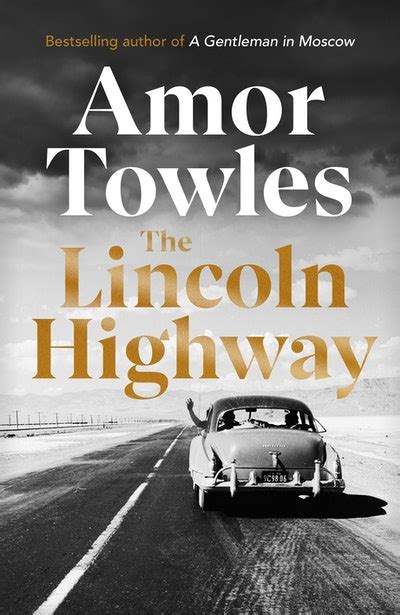The Lincoln Highway, Amor Towles, USA, 2021
One may be excused for thinking that The Lincoln Highway, covering around 600 pages, is predominantly about the Lincoln Highway, a highway stretching across the American continent, from New York to San Francisco; in actual fact it is more about New York City.
Revolving around three 18-year-old boys – Emmett, Duchess and Woolly – as well as Emmett’s 8-year-old brother, Billy, the story begins in 1954 in Nebraska (roughly halfway between the two ends of the highway). After fifteen months in custody for accidentally killing someone, Emmett Watson is returned home by the warden of a juvenile detention centre. His father has recently died and his mother is long gone, having walked out on the family years before. With no future on the badly managed farm (which is being repossessed by the bank in order to pay debts), Emmett, whose treasured possession is a blue Studebaker, decides to drive west to California along the Lincoln highway with Billy. Billy is hoping they will find the mother he no longer remembers while Emmett has plans to make his fortune, buying and selling houses.

However, unbeknown to Emmett, Duchess and Woolly (two other inmates from the same detention centre) have hitched a ride in the boot of the warden’s car. The two hitchhikers have unfinished business in New York, and when Duchess ‘borrows’ Emmett’s car to drive east, the brothers’ plan to travel to San Francisco is thwarted. With no other option, they are forced to get themselves to New York by whatever means possible in order to reclaim their car.
As the four boys head east by car or train we become more acquainted with each of them personally, chapters being told from the perspective of each of the travellers. It is possible that we become more understanding of why they are the way they are, and it is even possible that we anticipate a positive and happy ending to the saga. The interaction of a number of other, often colourful, characters and Billy’s book of hero stories, together with a good helping of incidental philosophical thought – at times thought-provoking; at times rather stereotyped – manages to endow the book with a variety of ideas and even direction. Whether there are too many ideas or too many possible directions depends on the likes and dislikes of the individual reader. Apart from this I did feel that the story, in spite of the beautiful writing, was at times balancing on the edge of YA literature.

As a clever, but generally naïve and often irritating, know-it-all, Billy comes across as a tool for imparting information. Emmett is the most responsible of the four while Woolly is kind and child-like, the complete opposite to Duchess. In spite of Duchess being mixed up, impulsive and unreliable, there are glimpses throughout the book of another Duchess, who wants to be seen as thoughtful and kind; I was, therefore, completely unprepared for the ending. Like a deck of cards thrown into the air, the resulting pattern re-arranges everything and all thoughts of YA literature are blown away. Perhaps the only character who manages to retain some kind of moral high ground is Billy.
Definitely a male-oriented book with the few female characters in roles that are generally regarded as subordinate: housekeeper, prostitute, home-breaker, subjugated wife… Nevertheless, putting gender issues and the main story to one side, for many American readers this would have to be a book where the mixture of American history, places, people and anecdotes all come together to create a very personal experience. For all other readers it is an interesting source of information about the 1950s in America and especially about New York City and some of the people living there.
